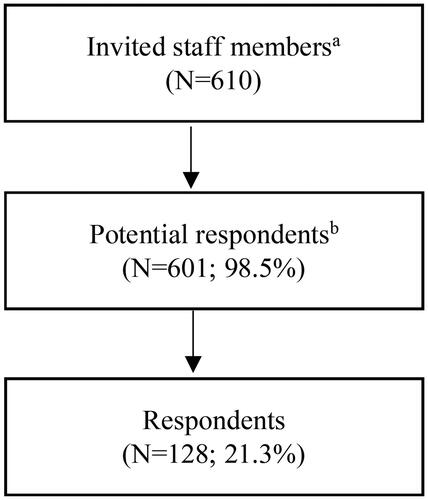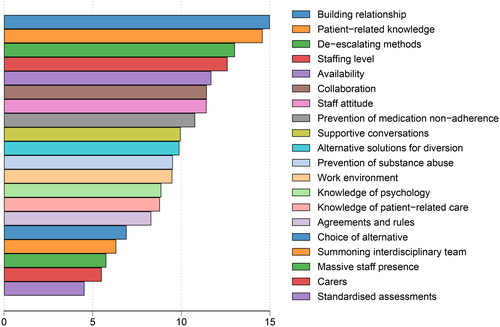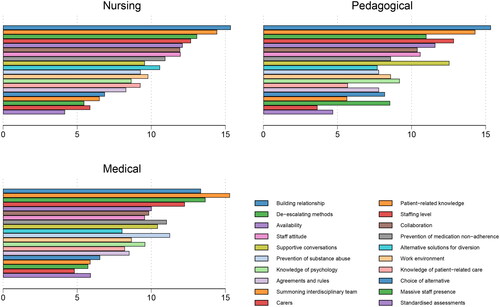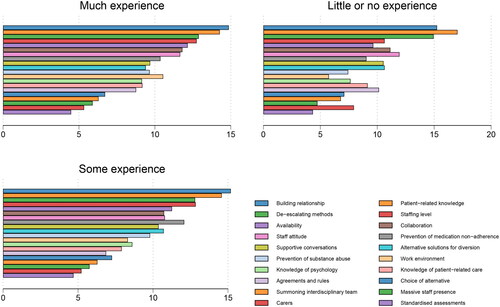Figures & data
Figure 1. Flowchart of the sampling and recruitment procedure for the questionnaire, including response rate. aMedical, nursing and pedagogical staff from three mental health hospital departments in the Region of Southern Denmark. bThe professionals were invited via their electronic work mail system, which occasionally malfunctioned.

Table 1. Sociodemographic characteristics of respondents and non-respondents (N = 601), n (%).
Table 2. Rating of interventions concerning relevance in reducing the use of mechanical restraint (N = 128), n (%).
Figure 2. Staff members’ ranking of the importance of the interventions (N = 128). The average ranks method was used to explore and assess the rankings of importance.

Figure 3. Ranking of interventions by educational background. The average ranks method was used to explore and assess the rankings of importance among the respondents (N = 128) presented by the following groups of professionals: medical staff (medical doctors), nursing staff (nurses and nursing assistants) and pedagogical staff (pedagogues and pedagogical assistants).

Supplemental Material
Download MS Word (144.5 KB)Data availability statement
The data that support the findings are not publicly available, but they may be made available upon reasonable request to the authors.

